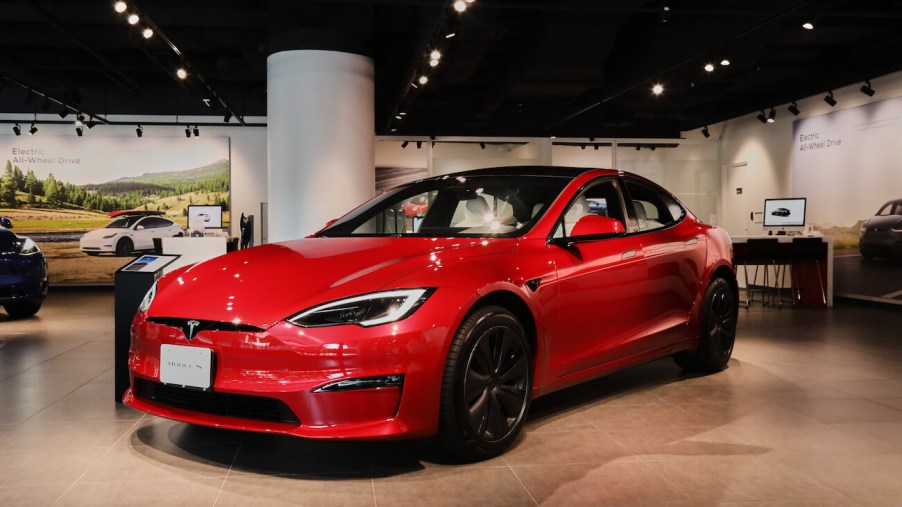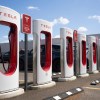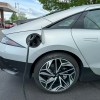
Less People Care About the Tesla Model S in 2023
The Tesla Model S is the company’s flagship device, but unfortunately for Tesla, Model S sales aren’t doing too hot so far in 2023. In fact, it’s doing worse to this point than it was doing last year. What’s behind the slide in 2023? Let’s dive into the numbers.
How did the Tesla Model S get here?
It’s hard to believe after witnessing the company’s meteoric rise, but barely more than 10 years ago, Elon Musk had yet to become a social media mogul, and Tesla was just a niche manufacturer offering a Roadster sports car that sold less than 2,500 units in its entire five-year production run, per Business Insider. Much of the brand’s success since then can be attributed to its first mainstream product, the sedan-looking hatchback Model S.
Per GoodCarBadCar, Tesla Model S sales reached 22,500 units so far in 2023 compared to 81,673 units at the same point in time last year — more than a 72% decline. That’s not to say that all Tesla sales are in the gutter, though. The brand’s perennially popular Model 3 is up more than 25% year-to-date versus last year, while the best-selling Model Y has increased sales by a whopping 75% year-over-year so far.
So why is the flagship Model S slipping so badly? As mentioned, it’s a seriously aging design. How old? Let’s just say that the Model S was developed when George Bush was still President of the United States, followed by the unveiling of a prototype in 2009 and the production model making its way to the market in 2012.
Since then, Tesla has made some minor tweaks to the styling and aesthetics of the Model S, as well as powertrain enhancements to extract both additional horsepower and range. That includes various performance modes, including Ludicrous, Ludicrous Plus, Plaid, and Plaid Plus — all playful references to the 1980s film “Spaceballs.”
Keeping Model S buyers interested with speed
Contrary to its silly naming conventions, the Ludicrous and Plaid are fast with a capital F. According to Tesla, a Model S Plaid can sprint from 0 to 60 MPH in just 1.99 seconds on its way to a standing quarter-mile time of 9.23 seconds. Since the car was released, some Model S Plaid owners have stripped the car to remove weight and run as fast as 8.73 seconds. For reference, a brand new 2024 Corvette E-Ray Hybrid is said to be capable of a 10.5-second quarter mile.
Lest you think the Model S can only go fast in a straight line, a Model S Plaid with the optional “Track Pack” also set a new 7 minutes and 25.231 seconds record at Germany’s famed Nürburgring race course this past summer, handily beating Porsche’s Taycan to become the fastest production EV ever to run the course.
The Model S is threatened by other brands and other Teslas
In spite of continuing to up the performance ante, there’s no escaping that the Model S platform is now 11 years old at a time when exciting newer vehicles like the Polestar 2 and Lucid Air are hitting the market. Though the Polestar 2 — brought to you from the same parent company as Volvo — isn’t as spacious as the Model S, it’s a clean sheet design that starts at a reasonable $51,300 and only reaches $64,400 even in its highest trim, which is the 416-hp Long Range with Performance Pack.
Lucid’s cutting-edge Air sedan, on the other hand, is definitely in the same weight class as the Model S, and a new-for-2024 Sapphire variant packs 1,234 hp, enough to challenge some of the flagship Tesla’s performance feats. Besides fresh styling, the Lucid Air also has a more welcoming and luxurious cabin compared to the Model S, which is still somewhat spartan and minimalist.
As if competition from rival EV markers wasn’t enough, the Model S may well be facing competition from within in the form of its Model 3 and Model Y siblings. Recent price cuts have brought the Model 3 compact sedan down to a starting price of $38,990, while the fan-favorite Model Y SUV begins at $43,990. Even after a recent price reduction of its own, the Model S is still a $74,990 car, at a minimum. Inexpensive leases are also available for the Model 3 and Model Y at $329 per month and $399 per month, respectively, though both leases require a substantial $4,500 down payment.
To be sure, it’s not 100% fair to compare the brand’s halo car, the Model S, with its two entry-level offerings, but the fact is that owning a Tesla does have a certain trendy factor that’s satisfied equally well by those lower-priced vehicles.
The cannibalization of the Model S by other Tesla models could get even worse next year when the highly anticipated refresh of the Model 3 hits U.S. markets. Nicknamed “Highland,” the facelifted Model 3 keeps the same underpinning as the outgoing model, but it does have much-improved styling that’s more angular. Reportedly, only the doors and rear fenders are retained from the old car’s coachwork.
Tesla has enjoyed a tremendous first-mover advantage over rival EV makers and has the Model S to thank as the car that started the electric revolution, but it can’t rest on its laurels forever. That’s particularly true as other manufacturers increasingly gain access to Tesla’s Supercharger fast-charging network, which will be a boon to the company’s profits, but make it less of a necessity to own an actual Tesla in order to leverage its charging ecosystem.



